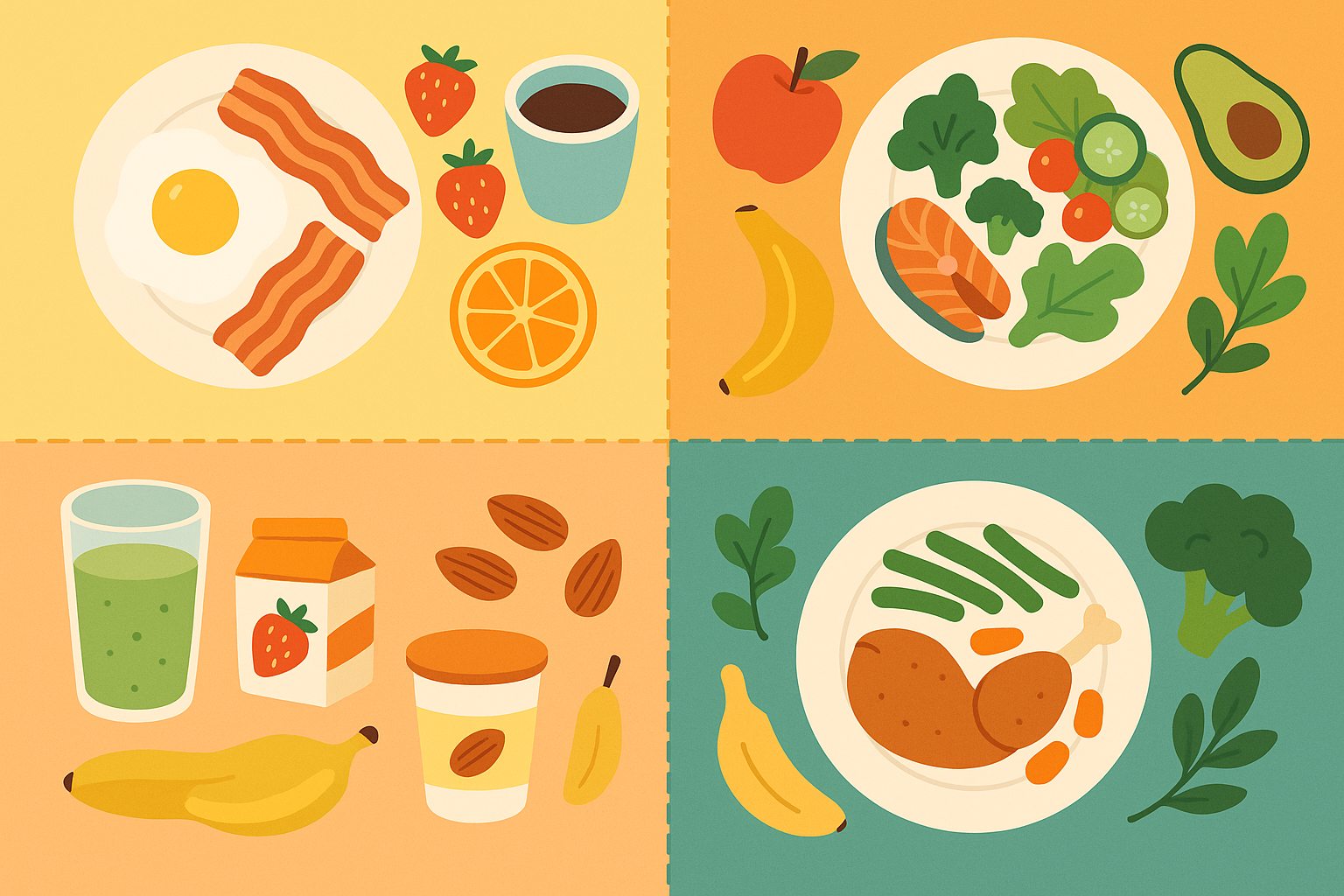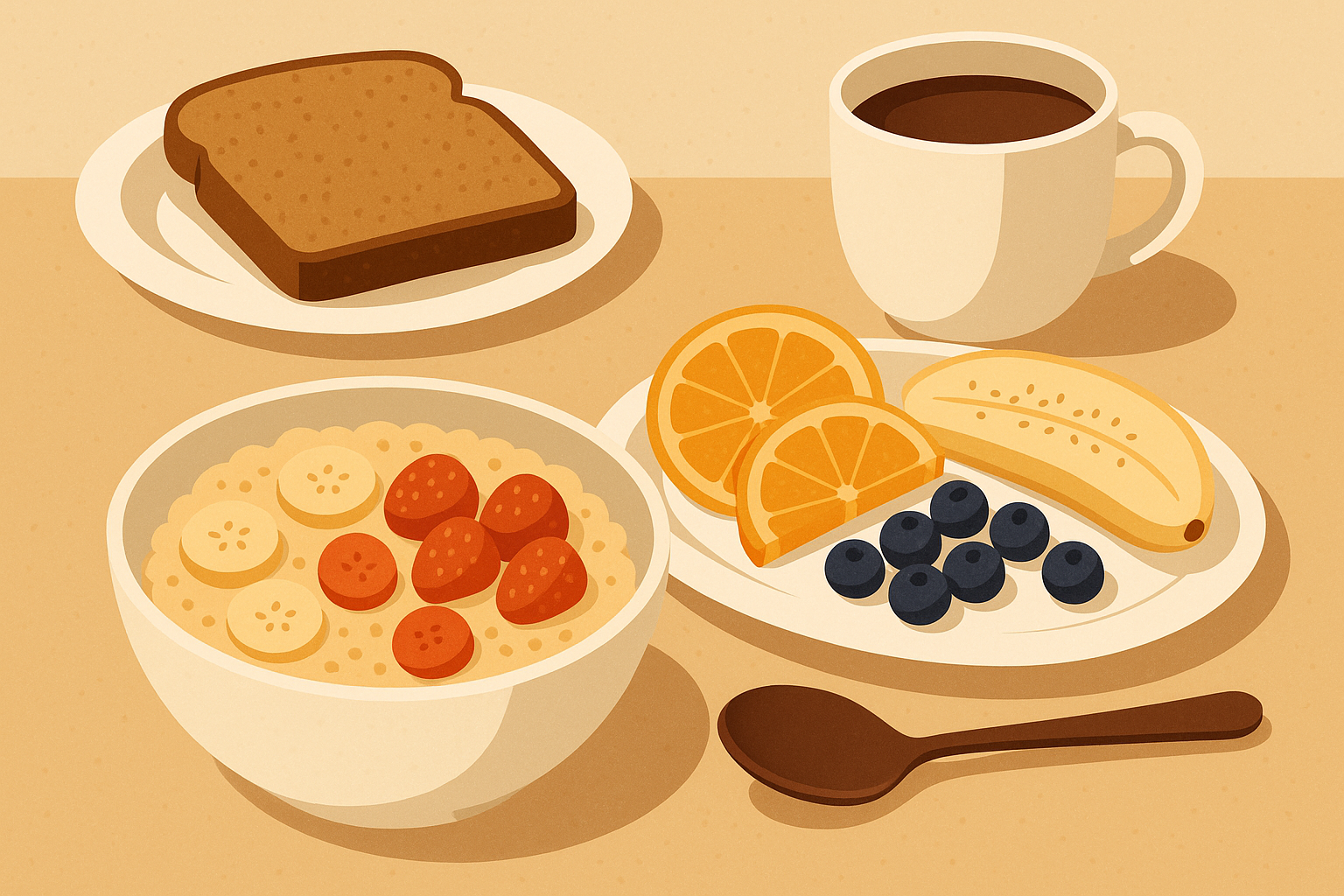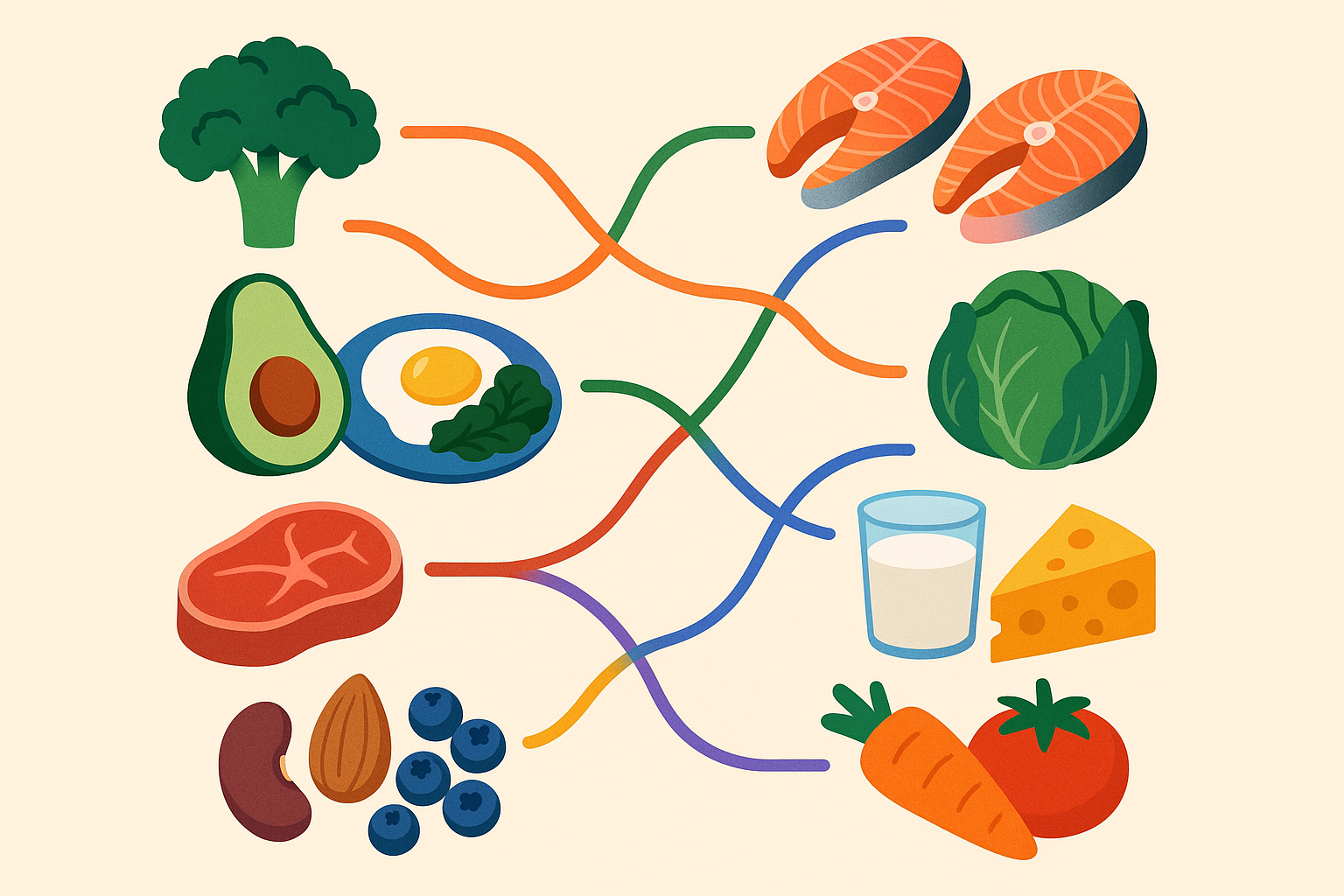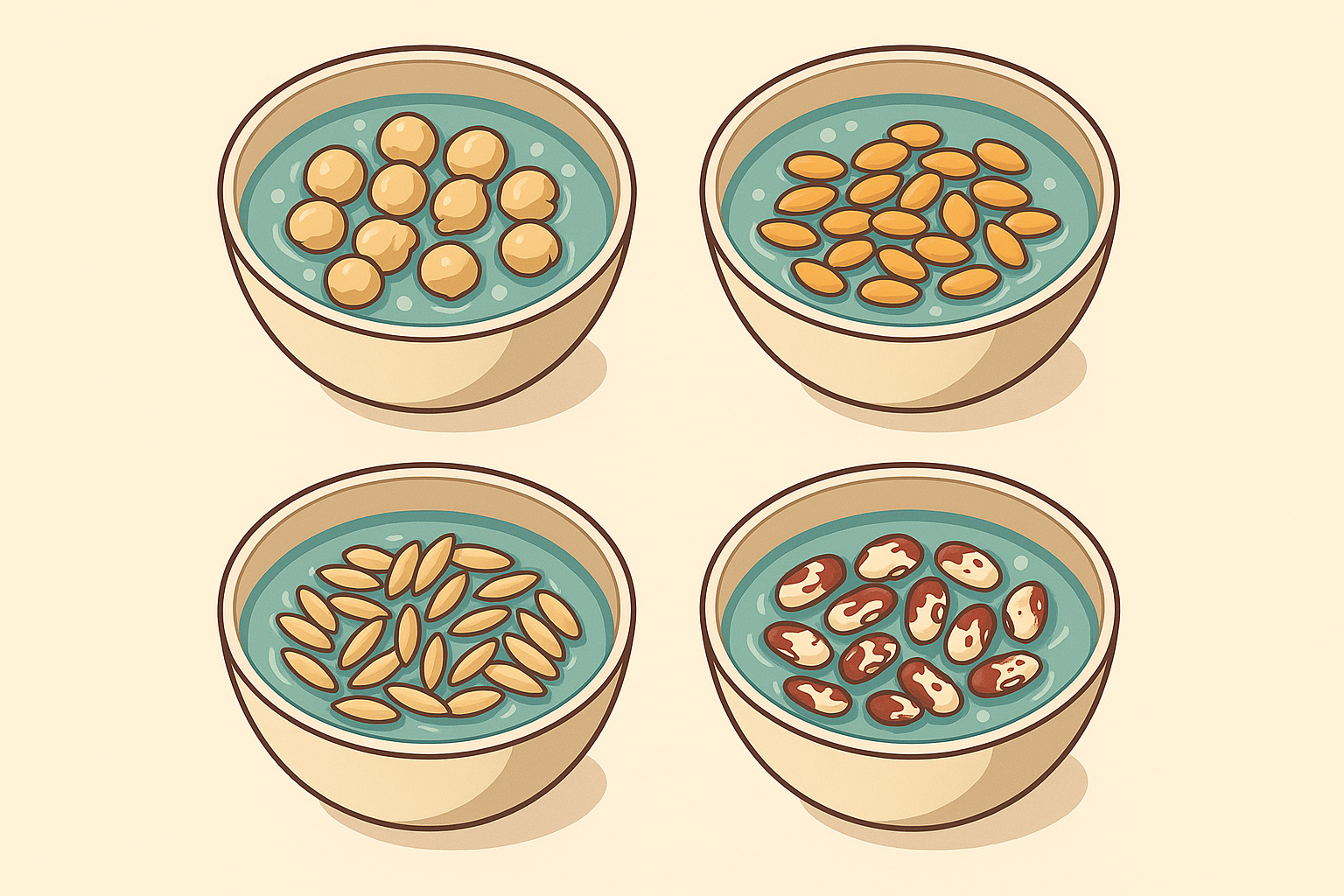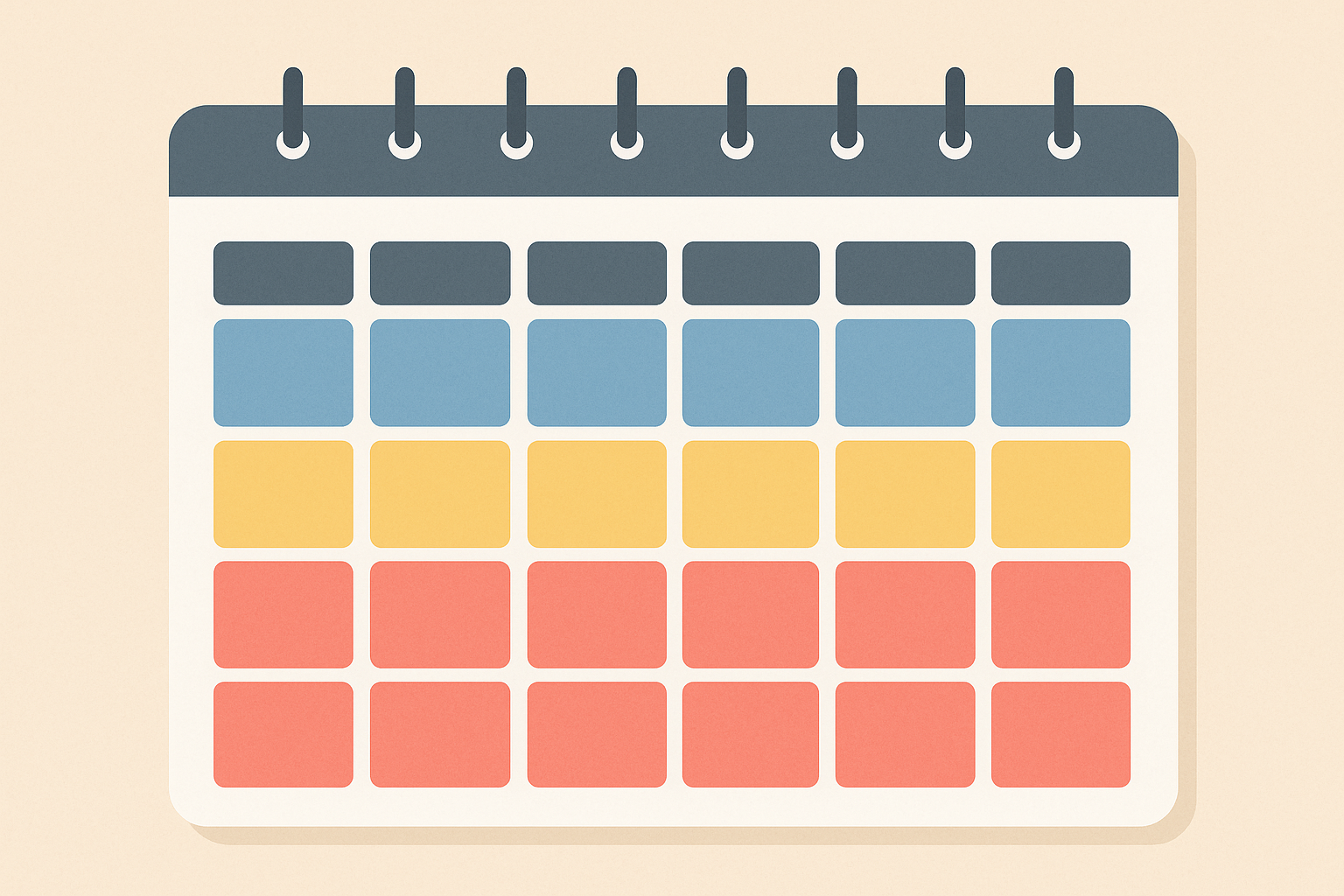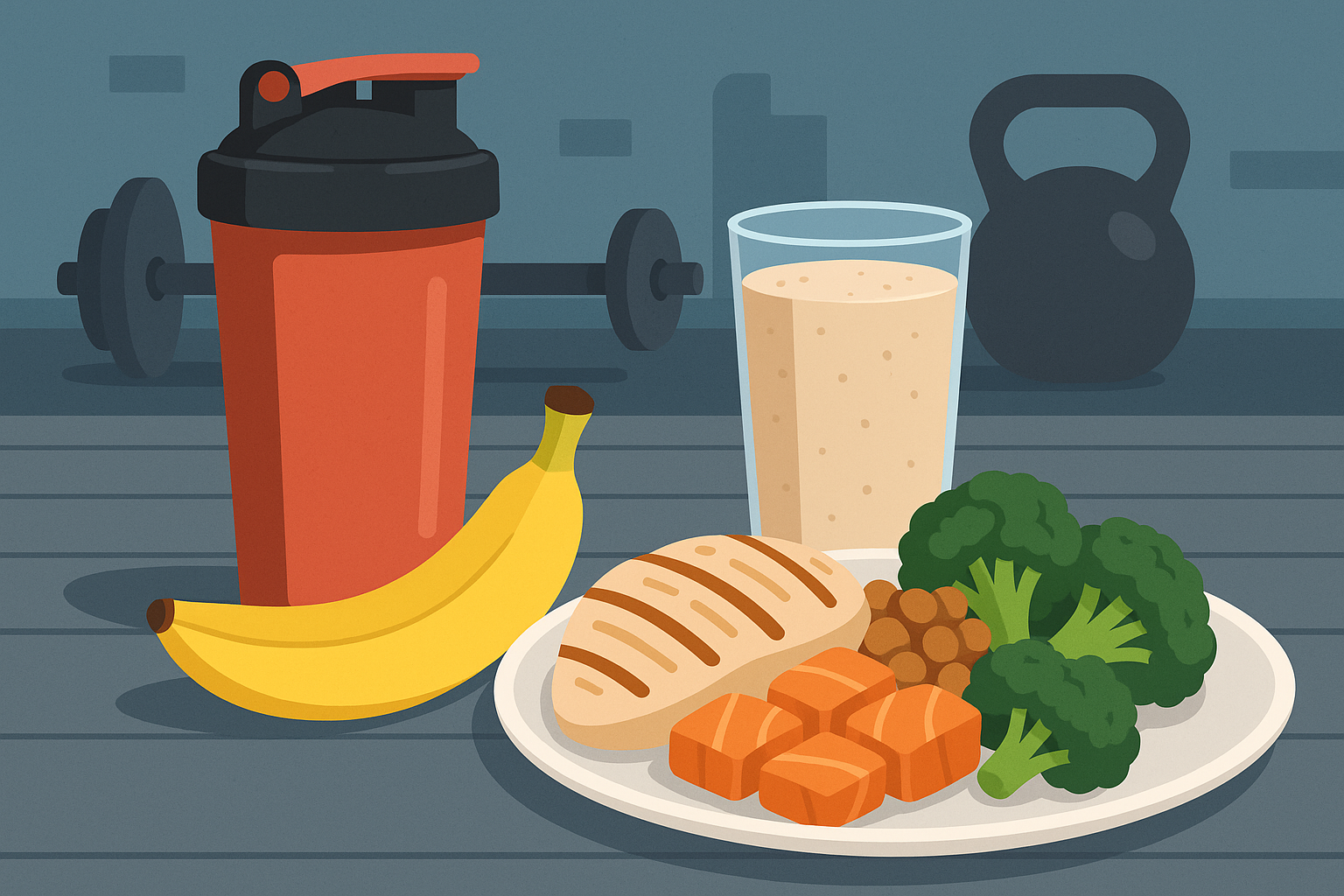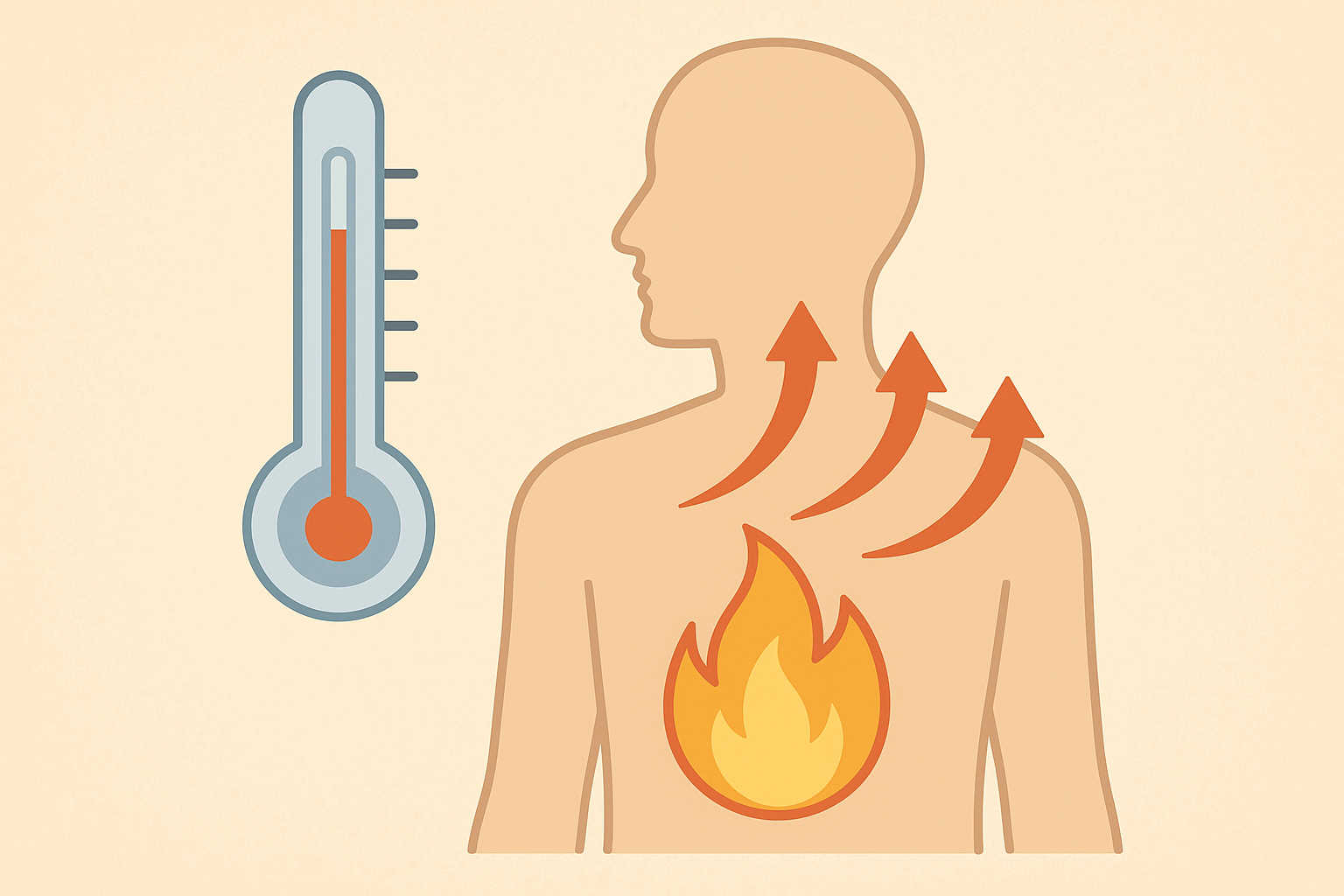The 2600 Calorie Meal Plan That Actually Works: Why Timing Beats Counting Every Time

I used to be that person meal prepping identical containers every Sunday, thinking I had nutrition figured out because I hit exactly 2600 calories each day. Then I’d wonder why some days I felt like I could conquer the world, and others I could barely drag myself through a workout. Turns out, I was missing something huge – your body doesn’t process those calories the same way at 7 AM versus 7 PM.
Here’s something that blew my mind – it’s not just about eating carbs (which should make up 45% to 65% of your diet), it’s about eating them when your body actually wants them. Think of your metabolism like a coffee shop – there are rush hours when everything moves fast, and quiet times when things slow down. You wouldn’t order a complicated drink during the morning rush, right?
Table of Contents
- When Your Body Clock Controls Your 2600 Calories
- The Hidden Multiplier Effect of Smart Nutrient Pairing
- Training Your Metabolism to Work Smarter, Not Harder
- Muscle Building Mastery with Strategic Calorie Distribution
- Final Thoughts
TL;DR
- Your body treats the same 2600 calories completely differently depending on when you eat them – morning is prime time for carbs, while evening requires a different game plan
- You can eat all the “superfoods” in the world, but if you’re pairing them wrong, you’re basically flushing money down the toilet – smart combinations can triple your nutrient absorption
- Switching up your carbs and fats throughout the week trains your body to burn fuel more efficiently, like teaching it to be bilingual with energy sources
- Building muscle isn’t just about cramming in protein – you need about 2.5-3g of leucine per meal and strategic timing to actually tell your muscles it’s time to grow
- Common “healthy” foods can block up to 80% of your mineral absorption, but simple prep tricks (like soaking your oats) fix this without changing your calorie targets
When Your Body Clock Controls Your 2600 Calories
Look, I get it. The idea of timing every meal sounds exhausting. I used to roll my eyes at people who talked about “eating windows.” But once I started paying attention to when I naturally felt hungry versus when I forced myself to eat, everything clicked.
Most people focus entirely on what foods make up their 2600 calories, but when you eat those calories matters just as much. Your body clock doesn’t just control sleep – it controls how well you handle carbs, how your digestive system works, and when your muscles are actually ready to grow.
I used to eat the same breakfast every day at different times, wondering why some mornings I felt energized while others left me sluggish. The timing was everything, and once I figured out the pattern, meal planning stopped feeling like guesswork.
Your Body’s Predictable Metabolic Windows
Here’s the cool thing – your metabolism isn’t random. It follows predictable patterns throughout the day, and once you know them, you can work with your body instead of against it.
I started tracking how I felt after eating the same breakfast at different times. The pattern was so obvious once I saw it laid out:
| Time Window | What’s Happening | How Many Calories | What to Focus On |
|---|---|---|---|
| 6-9 AM | Your body’s ready for carbs | 400-500 | Complex Carbs (130-150g) |
| 1-4 PM | Prime time for protein | 600-700 | Protein (40-50g) + muscle-building stuff |
| 6-9 PM | Time to slow things down | 500-600 | Gentle carbs (50-75g) |
Morning: When Carbs Actually Work in Your Favor
Between 6-9 AM, your body is basically begging for carbs. Your stress hormone (cortisol) naturally peaks, which sounds bad but is actually perfect for processing 400-500 calories from complex carbohydrates. It’s like your body’s natural caffeine hit.
I tested this by eating identical meals at different times and checking my blood sugar. The morning readings were consistently 20-30% lower than evening ones – same food, totally different response.
Here’s what I do during this window:
- Eat about a quarter of my daily carbs (130-150g) within 2 hours of waking up
- Add 15-20g of protein to keep things steady
- Include some healthy fats (10-15g) because your hormones need them
My Go-To Morning Combo: A big bowl of steel-cut oats (150 calories, 27g carbs) with a banana (105 calories, 27g carbs) and a tablespoon of almond butter (95 calories, 3.5g carbs, 8g fat). That’s 350 calories with about 58g of strategic morning carbs. Nothing fancy – just stuff that works with my body’s natural rhythm. For those looking to nail their oatmeal game, check out how to make oatmeal perfect every time.
Afternoon: Your Protein Sweet Spot
Between 1-4 PM, your muscles are basically putting up a “now hiring” sign. This is when your body is most ready to build and repair muscle tissue, and your digestive system is firing on all cylinders.
I schedule my biggest meals and heaviest workouts around 2 PM specifically because of this. It’s like catching a wave at the perfect moment – everything just works better.
My afternoon strategy:
- This is where I put my biggest protein portion (40-50g)
- I include foods rich in leucine (more on this later) to really tell my muscles it’s go time
- I add some magnesium-rich stuff for muscle function
Evening: Don’t Sabotage Your Sleep
As your metabolism naturally slows down in the evening, those final 500-600 calories need a different approach. The goal is supporting recovery without messing up your sleep or storing fat.
This is where most 2600-calorie meal plans fail – they ignore the fact that your body handles carbs differently after 6 PM. The same carbs that fueled your morning can end up as fat storage at night.
Setting Yourself Up for Good Sleep
Evening meals should help your body naturally wind down. There’s actually a chain reaction that happens: certain foods help produce serotonin, which then converts to melatonin, which helps you sleep better and recover faster.
I noticed that when I got my evening timing right, I fell asleep faster and woke up more refreshed. The connection between meal timing and sleep quality is way stronger than most people realize.
Smart Evening Carb Strategy
Evening carbs (50-75g) should come from sources that won’t spike your blood sugar – think sweet potato, quinoa, brown rice. Your body handles the same carbs differently at night, so you need to adjust accordingly.
Evening Meal Timing Checklist:
- ☐ Eat your final meal 3-4 hours before bedtime
- ☐ Include 20-30g of slow-digesting protein for overnight muscle repair
- ☐ Choose gentle carbs that won’t mess with your blood sugar
- ☐ Add some healthy fats (5-10g) for hormone production during sleep
- ☐ Include magnesium-rich foods (dark leafy greens, nuts, seeds)
- ☐ Cut off caffeine after 2 PM so you can actually sleep
The Hidden Multiplier Effect of Smart Nutrient Pairing
Understanding how to pair nutrients becomes even more important when you’re following specific eating patterns. For women especially, timing and pairing work differently because of hormonal changes, which is why intermittent fasting requires specialized approaches to keep nutrient absorption on point.
Here’s what nobody tells you – you can eat all the “superfoods” in the world, but if you’re pairing them wrong, you’re basically flushing money down the toilet. I learned this the hard way when my expensive organic spinach wasn’t doing squat for my iron levels.
Certain nutrient combinations can triple your absorption rates, which means you get way more bang for your buck from the same 2600 calories.
Making Your Food Work Harder
Strategic nutrient combinations can dramatically increase how much nutrition your body actually gets from those 2600 calories. This isn’t about taking a bunch of supplements – it’s about making the food you’re already eating work way harder for you.
I used to wonder why I felt tired despite eating nutrient-dense foods. Turns out, I was consuming the right nutrients at the wrong times or in combinations that basically cancelled each other out.
Getting the Most from Fat-Soluble Vitamins
Vitamins A, D, E, and K need fat to get absorbed properly. Most people eat these vitamins but only absorb a fraction because they’re missing the fat component. It’s like trying to wash dishes without soap.
I started adding a tablespoon of olive oil to my salads and noticed improvements in my skin and energy levels within weeks. Simple change, big difference.
Here’s my approach:
- Pair orange and red veggies (beta-carotene) with 8-12g of healthy fats
- Take vitamin D supplements with some saturated fat (like with eggs)
- Include vitamin K2 sources with vitamin D for better calcium handling
Fat-Soluble Vitamin Power Meal: Mix 2 cups of spinach (vitamin K), half an avocado (12g healthy fat), and a tablespoon of olive oil (14g fat) in a salad. Add 3 oz grilled salmon (vitamin D, 15g fat) for a 450-calorie meal that maximizes absorption of multiple vitamins through smart fat pairing.
Dealing with Mineral Competition
Here’s something that blew my mind – iron, zinc, and calcium all fight for the same absorption pathways in your gut. When you’re eating 2600 calories daily, this competition becomes a real problem.
I learned this the hard way when my iron levels stayed low despite eating iron-rich foods. Turns out I was drinking coffee with my iron-rich meals, which blocks absorption. Who knew?
My mineral game plan:
- Keep iron-rich meals and calcium-rich foods separated by 2+ hours
- Add vitamin C (100-200mg) with iron-containing meals
- Eat zinc-rich foods with protein but away from high-fiber meals
Neutralizing the Nutrient Blockers
Modern food processing has increased compounds that can block nutrient absorption in many healthy foods. Within a 2600-calorie plan, these can seriously mess with your nutrient intake.
The good news? Simple prep methods can fix most of these issues. Recent analysis shows that “availability of healthy options” Washington University Student Life has become a major concern in institutional meal planning, which makes understanding nutrient optimization even more important when you’re working with limited food choices.
The Grain and Legume Problem
Grains and legumes contain something called phytic acid that basically handcuffs your minerals, reducing absorption by up to 80%. When you’re eating 2600 calories daily, this becomes a big deal.
But here’s the fix – traditional prep methods can neutralize these effects while keeping your calorie targets. I started soaking my oats overnight and noticed better digestion and more sustained energy.
Managing Oxalates Without Going Crazy
Eating 2600 calories daily means you’re getting more of everything – including oxalates from healthy foods like spinach and nuts. Too many oxalates can mess with mineral absorption and even cause kidney issues.
My oxalate management approach:
- Rotate high-oxalate greens (spinach) with low-oxalate ones (lettuce, arugula)
- Eat calcium-rich foods with oxalate-containing meals to bind them up
- Make sure I’m getting enough magnesium (400-500mg daily) to prevent problems
Training Your Metabolism to Work Smarter, Not Harder
Before jumping into cycling protocols, it’s smart to figure out your baseline by learning how to find your carb tolerance to determine your sweet spot within the 2600-calorie framework.
The whole “cycling” thing sounds way more complicated than it is. Basically, some days you eat more carbs, some days less. It’s like how you naturally eat more comfort food in winter and lighter meals in summer – except you’re doing it intentionally.
Instead of eating the same thing every day, switching up your carbs and fats while keeping your 2600 calories consistent trains your body to efficiently use different fuel sources. It’s like teaching your metabolism to be bilingual.
Strategic Switching Within Your Calorie Budget
Rather than the same macronutrient breakdown every day, varying your carb and fat intake while maintaining 2600 calories forces your body to get better at using both glucose and fat for fuel. This improves how you handle sugar and burns fat more efficiently.
I was skeptical about cycling at first – it seemed unnecess arily complicated. But after three months, my body composition improved significantly, and I felt more energetic throughout the week.
| Phase | How Long | Carbs (g) | Fat (g) | Protein (g) | What It Does |
|---|---|---|---|---|---|
| High-Carb | 3 days | 250-300 | 100-120 | 180-200 | Refills energy stores, boosts performance |
| Moderate-Carb | 2 days | 200-250 | 120-140 | 180-200 | Teaches flexibility |
| Lower-Carb | 2 days | 150-200 | 140-160 | 180-200 | Improves fat burning |
Carb Cycling That Makes Sense
Switching your carb intake between 150-300g while keeping 2600 calories teaches your body to efficiently use both sugar and fat for fuel. It’s like cross-training for your metabolism.
My approach:
- 3 days higher carbs (250-300g), 2 days moderate (200-250g), 2 days lower (150-200g)
- Adjust fat intake in the opposite direction (100-150g range) to keep calories consistent
- Keep protein stable around your body weight needs
Protein Timing for Muscle Growth
Research shows that eating 25-40g of quality protein every 3-4 hours maximizes muscle building. The timing and amino acid profiles matter more than just hitting your total daily protein target.
This is especially important when you’re eating 2600 calories for muscle gain. I discovered that spreading my protein evenly throughout the day made a noticeable difference in my recovery and strength gains compared to loading most of it into one or two large meals.
Working with Your Natural Hormone Rhythms
Your hormonal response to food changes throughout the day and across training cycles. Aligning your meal timing with these natural fluctuations makes every one of those 2600 calories work more effectively.
Riding Your Insulin Sensitivity Wave
Your body’s ability to handle carbs follows a predictable daily pattern – it’s best in the morning and after workouts, worst in the evening. Understanding this lets you eat carbs when your body actually wants them instead of fighting against it.
I used to eat my biggest carb portions at dinner because that’s when I had time to cook elaborate meals. Switching to front-loading carbs earlier in the day transformed my energy levels and body composition within weeks.
Making Hunger Hormones Work for You
Your hunger hormones (leptin and ghrelin) can be influenced by meal timing and what you eat. This makes sticking to your 2600-calorie target way easier and more sustainable long-term.
My hormone optimization approach:
- Eat more calories earlier in the day when hunger control is naturally better
- Include 20-30g of protein at breakfast to reduce cravings throughout the day
- Time biggest meals around training sessions to maximize nutrient use
Hunger Control Checklist:
- ☐ Eat 30-40% of daily calories before 2 PM
- ☐ Include protein at every meal to keep hunger stable
- ☐ Time largest carb portions around workouts
- ☐ Keep meal timing consistent to regulate hunger patterns
- ☐ Include 5-10g fiber per meal to feel fuller
- ☐ Stay hydrated with about 35-40ml water per kg body weight daily
Muscle Building Mastery with Strategic Calorie Distribution
When you’re eating 2600 calories to build muscle, your digestive system needs to be on point to handle the increased food load. Poor digestion can sabotage even the best muscle-building plan, which is why understanding simple ways to beat bloat and improve digestion ensures your body can actually process all that food effectively.
If you’re using 2600 calories specifically to build muscle, it goes way beyond just eating more food. Success requires understanding when your muscles are actually ready to grow and how to support that process nutritionally.
Hitting Your Muscle Growth Triggers
Building muscle isn’t just about cramming in protein – you need about 2.5-3g of leucine per meal to actually tell your muscles it’s time to grow. Within a 2600-calorie framework designed for muscle gain, strategic leucine distribution maximizes muscle-building signals throughout the day.
This isn’t just about total protein – it’s about getting the right amino acids at the right times. I used to focus solely on hitting my daily protein target, but once I started tracking leucine specifically, my muscle gains accelerated noticeably.
Smart Leucine Distribution
Spreading leucine-rich foods (dairy, eggs, meat) across 4-5 meals ensures you’re constantly sending growth signals to your muscles rather than just hitting them once or twice a day.
My leucine game plan:
- Include 25-30g of complete protein providing 2.5-3g leucine per meal
- Space protein every 3-4 hours to keep amino acid levels elevated
- Focus on post-workout meals with 40-50g protein for enhanced recovery
Leucine Power Meal: Combine 6 oz lean ground beef (35g protein, 2.8g leucine), 1 cup cooked quinoa (8g protein, 0.4g leucine), and 1 cup steamed broccoli (3g protein, 0.2g leucine) for a 520-calorie meal delivering 46g total protein with 3.4g leucine – well above the threshold needed to maximize muscle building.
Advanced Muscle Growth Strategies
Building muscle requires more than just protein synthesis – your muscles need to actually grow new cells. Specific nutrients within your 2600-calorie plan can enhance this process, accelerating muscle growth beyond what basic meal planning achieves.
Omega-3s for Better Muscle Building
Getting 2-3g daily of EPA and DHA (the good omega-3s) enhances how well your muscles respond to protein and reduces exercise-induced inflammation. This allows for better recovery and growth, making your training more effective.
I started eating fatty fish three times per week and noticed significant improvements in my recovery between training sessions. The anti-inflammatory effects became apparent within the first month.
Natural Creatine Through Food
While most people think of creatine as a supplement, creatine-rich foods and strategic timing within your meal plan can enhance training capacity and help your muscles hold more water (which supports growth).
My food-based creatine approach:
- Include 300-500g of red meat weekly for natural creatine
- Eat creatine-rich foods post-workout with simple carbs
- Stay well hydrated (35-40ml per kg body weight) for optimal creatine function
Syncing Training and Nutrition for Maximum Results
The relationship between when you train and when you eat becomes critical when using 2600 calories for muscle gain. The post-exercise period creates unique conditions that dramatically alter how your body processes and uses nutrients for muscle tissue.
Pre-Training Fuel Strategy
Eating 200-300 calories 60-90 minutes before training creates optimal conditions for performance and ensures your post-workout nutrition is maximally effective for muscle building.
Maximizing Your Post-Workout Window
The 2-hour period after training represents the most critical window for getting nutrients to your muscles. This requires specific ratios and timing within your 2600-calorie framework to maximize the muscle-building response.
My post-workout protocol:
- Get 40-50g whey protein within 30 minutes post-workout
- Include 60-80g fast-digesting carbs to refill energy stores
- Add leucine-rich foods to maximize muscle growth signals
- Follow with a complete meal containing 500-600 calories within 2 hours
Tracking Progress Beyond the Scale
A 2600-calorie intake means different things for different people depending on your metabolism, training volume, and body composition. Smart tracking ensures you’re in the optimal range for muscle gain while minimizing fat accumulation.
My progress monitoring approach:
- Weigh myself weekly at the same time and conditions
- Track strength progression as an indicator of adequate fueling
- Measure body composition changes monthly using consistent methods
- Adjust intake by 100-200 calories based on progress markers
Muscle Building Progress Tracking Checklist:
- ☐ Weigh yourself same time daily (preferably upon waking)
- ☐ Track strength gains in compound movements weekly
- ☐ Measure body circumferences (arms, chest, thighs) bi-weekly
- ☐ Monitor sleep quality and recovery markers
- ☐ Assess energy levels throughout training sessions
- ☐ Document meal timing and post-workout recovery
- ☐ Adjust calories by 100-200 based on weekly weight changes
Preventing Your Body from Getting Too Comfortable
As your body adapts to consistent 2600-calorie intake, your metabolism gets more efficient, which can slow muscle gain progress. Your metabolism isn’t static – it responds to prolonged caloric intake by becoming more efficient, which can stall results if you don’t recognize and manage it.
My approach to keeping things moving:
- Take periodic “diet breaks” with maintenance calories every 8-12 weeks
- Change up training stimulus to prevent adaptation
- Monitor morning body temperature as a metabolism indicator
- Adjust calories based on rate of weight gain (target 0.5-1 lb per week)
Figuring Out Your True Calorie Needs
Standard calorie calculators often underestimate the needs of people doing serious muscle-building programs. A 2600-calorie intake might be a 300-calorie surplus for one person but maintenance calories for another.
Understanding your true daily energy needs ensures those 2600 calories provide the right surplus for your goals. Your actual daily energy expenditure includes way more than just your basic metabolic rate – there’s the energy cost of digesting food, your workouts, and all the fidgeting and daily activities you do.
Most people underestimate that last category – the calories burned through fidgeting, maintaining posture, and daily activities. This can vary by 500+ calories between people, making personalized tracking essential.
For those looking to optimize nutrient absorption and support advanced meal planning strategies, understanding the role of marine collagen peptides can fill gaps that even the most strategic 2600-calorie plan might miss. Their focus on bioavailability and clean ingredients aligns perfectly with the precision approach I’ve outlined here.
Final Thoughts
Look, mastering a 2600-calorie meal plan isn’t about becoming a nutrition robot. It’s about understanding your body well enough that eating becomes natural and energizing, not a daily math problem you’re trying to solve.
The biggest game-changer? Realizing your body treats the same 2600 calories completely differently depending on when and how you eat them. Morning carbs work with your natural stress hormone rhythm, afternoon protein hits during peak muscle-building time, and evening meals need strategic planning to support recovery without messing up your sleep.
Will you mess this up sometimes? Absolutely. I still eat pizza at 10 PM occasionally and don’t stress about it. This isn’t about perfection – it’s about having a framework that works most of the time.
Start small. Pick one thing that makes sense to you – maybe it’s the morning carb timing, or perhaps the leucine approach for muscle gain. Don’t try to overhaul everything at once. I tried that and lasted about three days before giving up.
The goal isn’t to become obsessive or carry around a stopwatch. Some days life happens – you eat dinner at 9 PM or skip your usual breakfast timing. That’s normal. This is about understanding the patterns so you can work with them most of the time.
What matters most is consistency with your 2600-calorie target while gradually incorporating these strategies. Small improvements add up over time, and your body will adapt to these approaches as you implement them consistently.
If you’re thinking this sounds complicated, I hear you. But it’s actually simpler than counting every macro once you get the rhythm down. It becomes second nature – like knowing you shouldn’t drink coffee right before bed.
For those serious about optimizing their 2600-calorie meal plan, understanding choosing the best collagen powder supplements can enhance your protein distribution strategy, especially during those critical post-workout windows to complement your advanced meal planning approach.
Bottom line: Eat your carbs earlier, protein throughout the day, and don’t stress if you can’t follow this perfectly. Your body is more forgiving than you think, and understanding these patterns will make those 2600 calories work way harder for you.

